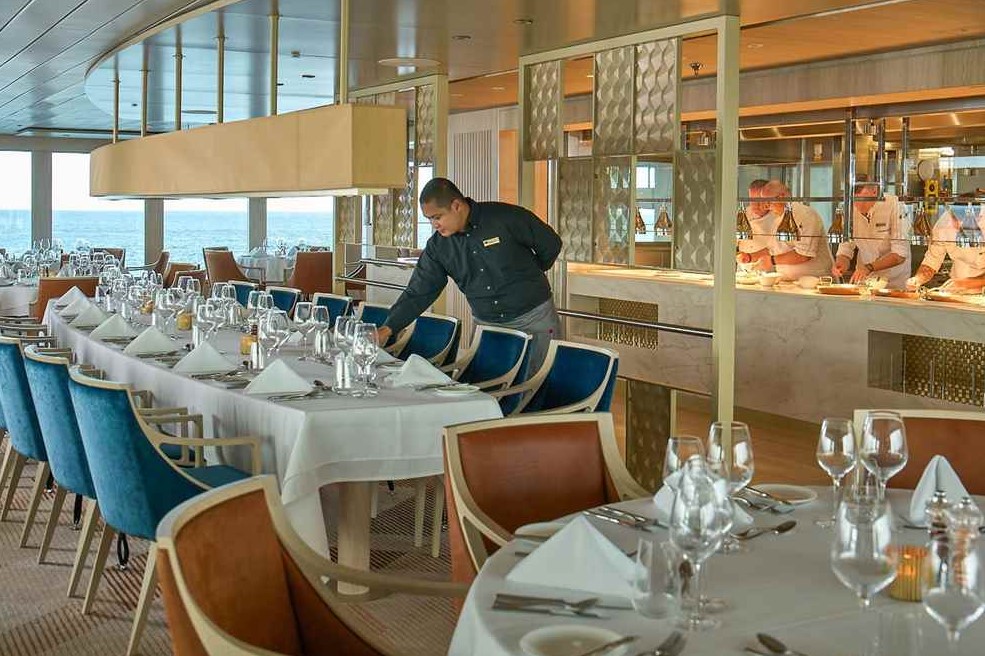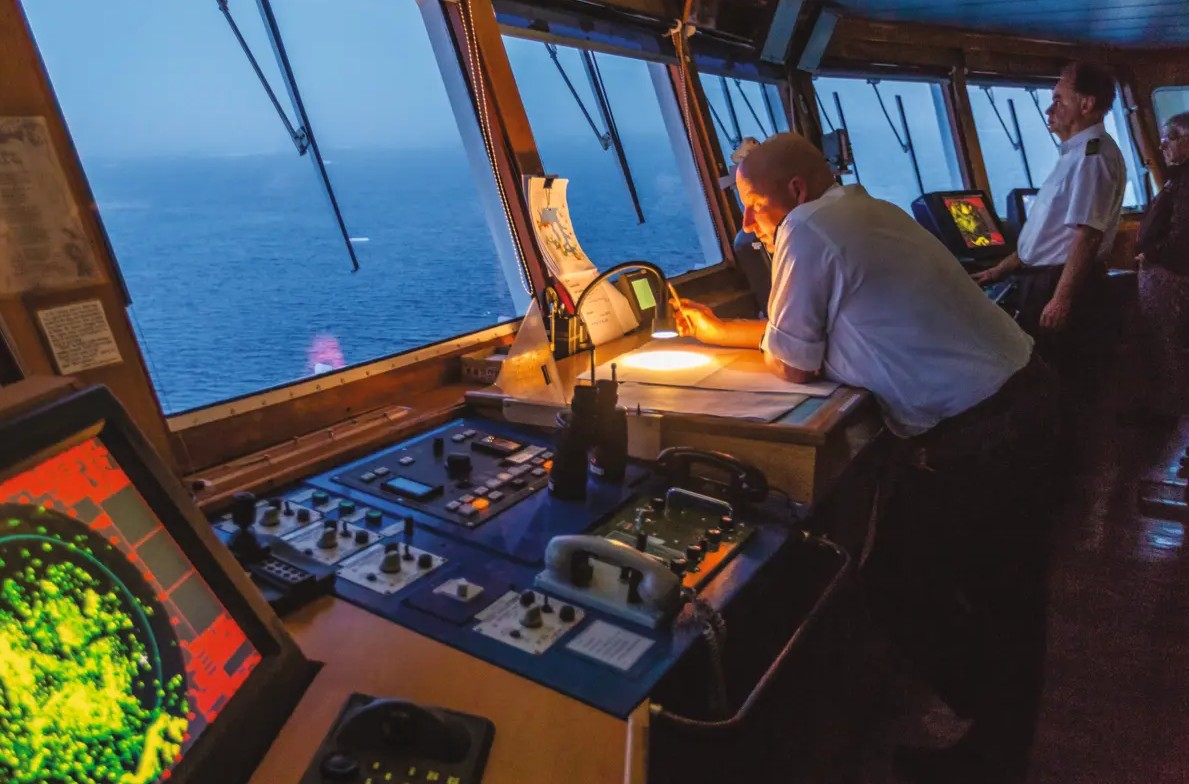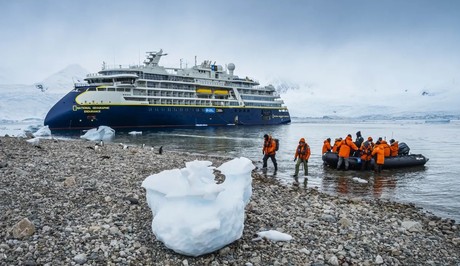Best of Chilean Patagonia: Fjords, Glaciers, and Torres Del Paine
Optimize your Patagonia experience with a land and sea expedition. Savor the grandeur of Torres del Paine’s sunrises and sunsets, its iconic landscapes, and its profusion of wildlife during a three-day stay at the Tierra Patagonia Hotel & Spa or the outstanding Explora Patagonia Hotel Salto Chico. Then explore the fjords, glaciers, and panoramic vistas of Patagonia’s coast and waterways, which are only accessible by expedition ship. Venturing out on Zodiac forays, kayaking pristine fjords, or hiking virgin trails, you’ll breathe the rarified air of a mythic region. Enjoy special access to Argentina’s Isla de Los Estados (Staten Island)—a seldom-seen island covered in wind-sculpted flora with wildlife that includes South American fur seals and Magellanic penguins. Discover the vast parklands of Karukinka, and check viewing legendary Cape Horn off your life list as well.
Highlights
• Venture inland to explore the wildlife-rich, iconic landscapes of Torres del Paine, Patagonia’s jewel, with either the Tierra Patagonia Hotel or the Explora Patagonia Hotel as your base camp
• Explore wild, windswept Isla de los Estados (Staten Island), located at the extreme end of South America and largely off limits to travelers since 1923
• Transit the legendary Beagle Channel and see storied Cape Horn
• Venture through wildlife reserves not easily accessible to the public, including Karukinka Natural Park in Tierra del Fuego
• Zodiac cruise and kayak through the breathtaking Chilean fjords
Arrive in Santiago, Chile. We check in to the centrally located Mandarin Oriental Hotel and have the morning to relax. Santiago is nearly surrounded by the Andes, which form an inspiring backdrop to our afternoon guided overview of this vibrant city. We explore the Plaza de Armas, the main square, and nearby Presidential Palace, enjoying wonderful views from the many hills that dot the city.
Fly to Punta Arenas, then drive to Puerto Natales, one of Patagonia’s southern gateways, and check into The Singular Hotel Patagonia. Enjoy dinner at the hotel. (B,L,D)
Drive into this UNESCO Biosphere reserve and spend three days at Explora Patagonia Lodge or Tierra Patagonia Hotel, discovering one of the most wildlife-rich areas in the Americas, covering 450,000 acres of glaciers, forests, grasslands, rivers, and colorful lagoons. Choose among a variety of possibilities, including walks and hikes, horseback riding, sailing among icebergs to the foot of the immense Grey Glacier, visiting the Salto Grande waterfall, and seeing the towers of the central massif from the Blue Lagoon. Look out for guanacos, gray foxes, rheas and Andean condors. (B,L,D)
We have a final morning to explore Torres del Paine. We then drive to Puerto Natales, where we embark National Geographic Resolution. (B,L,D)
Be on deck to look for condors and other wildlife on our way out of Puerto Natales as our ship transits the narrow sliver of water known as the Kirke Narrows—only accessible to small ships like National Geographic Resolution and always a challenge to navigate because of the powerful currents that flow through its pinch point. Today and during the following days you’ll be treated to the spectacular features of an active glaciated landscape with hanging valleys and tributary glaciers. This region was navigated by Ferdinand Magellan’s expedition and it took most of November 1520 for his ships to find a way through the channels that lie between the continental mainland and Tierra del Fuego to the south. We’ll look to make a first stop in the extensive maze of channels and islands of the Chilean fjords, where we may go out by Zodiac and kayak. (B,L,D)
Tierra del Fuego is one of Patagonia’s crown jewels. We visit its newest and largest protected area: Karukinka Natural Park. Established in 2004 through a gift from Goldman Sachs, Karukinka is one of the largest donations ever made for conservation. We’re thrilled to have special permission from the Wildlife Conservation Society to visit this private reserve, which spans 1,160 square miles and harbors endangered culpeo foxes, Andean condors, albatross, grebes, petrels, fulmars, shearwaters and many other kinds of wildlife. We may explore Jackson Bay, backed by a skyline of rugged mountains and look for wildlife including black-browed albatross that nest on one of the nearby small islands. We may walk a trail to a lovely waterfall and look for elephant seals resting on not only the beach but also high in the grass meadows and even in the small river draining the valley inland. (B,L,D)
We’ll explore more stunning wilderness as we see the fjords and glaciers of the region by Zodiac, kayak and on foot. A vast area of soaring, snowcapped mountains, gigantic glaciers, thousands of verdant islands, serene lakes, and waterfalls—the archipelago is scarcely touched by man. Take Zodiacs out to explore these protected waters and rugged shores, the blue and white of ice contrasting with greens of the forest highlighted by splashes of flowering plants. Look for the Andean condors, albatrosses, grebes, petrels, fulmars, shearwaters and many other birds that inhabit this otherworldly realm. Then we sail the Beagle Channel and will look to hike and kayak one of the wild areas in this region of beech forests, mountains and wild rivers. (B,L,D)
Today we visit Cape Horn, near the southernmost tip of the South American continent, named in 1616 for the Dutch town of Hoorn. These waters are famously difficult to navigate, and over the centuries have been the graveyard of many ships —which before the opening of the Panama Canal had to round the Cape to sail between the Pacific and Atlantic Oceans. Of course, we'll use our modern equipment to explore safely. Weather permitting, we'll take our Zodiacs ashore and walk to the top of the hill for panoramic views and to see the memorial placed there in 1992, showing an albatross in silhouette. (B,L,D)
We have been given special permission to visit extraordinary Staten Island, and our ship will be one of the only expedition ships ever allowed here. It’s a place of superlatives, barely touched in recent decades and visited primarily by a few scientists and those who man the tiny naval observatory. The island was named by Dutch explorers in 1615. Its mountainous, forested landscapes and rugged fjords are beautiful, and we’ll find a great deal of interest here. Our exact schedule will remain flexible to take best advantage of conditions. We’ll search for southern rockhopper and Magellanic penguins, many other water birds, and fur seals and sea lions. We’ll also look for otters on our landings ashore, and we’ll see the replica of the 1884 San Juan de Salvamento “lighthouse at the end of the world,” which inspired Jules Verne’s novel by the same name. There will be chances to walk in the southern beech forests. These days are bound to stand out as a unique chance to explore a very remote place. (B,L,D)
Disembark in Ushuaia, the southernmost city in the world. Take a charter flight to Santiago and connect to your overnight flight home. (Day 14: B,L)
Itineraries are subject to change.
|
Book now |
More Cabin Categories & Prices Available
Category 1. From

|
Book now |
More Cabin Categories & Prices Available
Category 1. From

Vessel Type: Expedition Ship
Passenger Capacity: 126
Length: 124 m
Built: 2020
National Geographic Endurance is a state-of-the-art expedition vessel purpose-built for year-round polar navigation. Named in honour of Sir Ernest Shackleton’s legendary Endurance expedition, she is the first polar ship in Lindblad’s history designed from the keel up for exploration. With an ice-class rating of PC5 (Category A) and a fully stabilised hull, she grants access to remote and often uncharted corners of the Arctic and Antarctica in exceptional comfort and safety.
Her revolutionary X-Bow®—a striking forward-leaning design—enables superior wave-cutting performance, ensuring a smoother, quieter ride and minimising spray on deck for better wildlife observation. On board, guests enjoy thoughtfully designed public spaces including a wraparound observation lounge, library, and an expedition base for gear and briefings. Dining is offered across three flexible venues, all serving sustainable, locally inspired cuisine. With a full suite of tools for exploration and a design deeply rooted in expedition heritage, Endurance is the ultimate platform for discovering Earth’s most remote regions.









Vessel Type: Luxury Expedition
Length: 108 meters
Passenger Capacity: 148 (single & twin cabins)
Built / Refurbished: 1982 / 2008
Originally constructed for Norway’s renowned Hurtigruten Coastal Express, National Geographic Explorer was a natural fit for the Lindblad Expeditions fleet thanks to her exceptional manoeuvrability, ice-strengthened hull, and purpose-built expedition design. Now fully stabilised and refitted with over five decades of exploration expertise, she is ideally suited for navigating the most remote corners of the globe—from the rugged coasts of Europe to the icy passages of the polar regions. With vast windows throughout and a Scandinavian-inspired interior, the ship invites guests to stay connected with their environment at every turn.
Aboard National Geographic Explorer, every feature is tailored to enhance discovery. From the open Bridge and observation deck to the Chart Room and mudroom for expedition gear, the ship is an authentic platform for adventure. Her recently updated suites offer comfort and understated elegance, while public spaces such as the library, Global Gallery, and multiple dining areas encourage camaraderie and relaxation. Carrying expert guides, state-of-the-art tools, and a fleet of Zodiacs and kayaks, this 148-guest ship brings guests closer to nature with all the style and substance expected of a flagship expedition vessel.








Optional tours and excursions available. Please contact us for more details.
Inclusions
• All accommodations, meals, and non-alcoholic beverages aboard ships
• Use of snorkeling equipment, wet suits, and kayaks (where available)
• Services of our expert expedition team and guest speakers
• Services of a ship physician on most voyages
• Certain hotels and meals ashore as indicated in the itinerary
• Round-trip transfers based on group flights
• Shore excursions, sightseeing, entrance fees, and special access permits
• Taxes, service charges, and tips (except for ship’s crew, at our guests’ discretion)
Exclusions
• Air transportation (except when we indicated in the itinerary, as included) Extensions
• Passport, visa, and immigration fees
• Travel Protection Plan
• Special and unique excursions such as scuba diving, flightseeing, etc. (where offered)
• Alcoholic beverages (alcohol is included on select ships)
• Items of personal nature
• Phone and Internet Service
• Laundry
• Gratuity for ship’s crew, at our guests’ discretion (crew tips are included on select ships)
Our Associates Include














